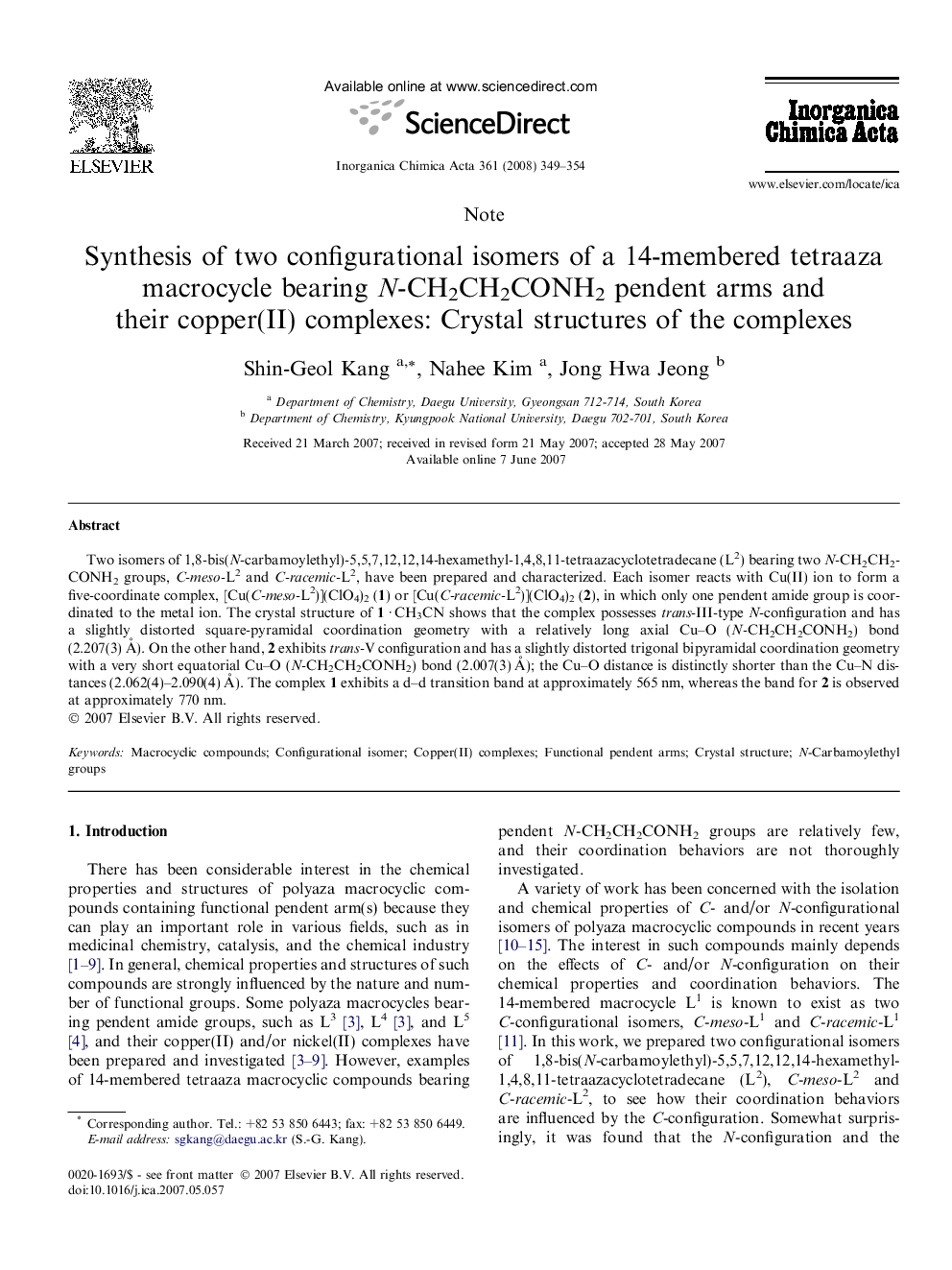| کد مقاله | کد نشریه | سال انتشار | مقاله انگلیسی | نسخه تمام متن |
|---|---|---|---|---|
| 1307602 | 975147 | 2008 | 6 صفحه PDF | دانلود رایگان |

Two isomers of 1,8-bis(N-carbamoylethyl)-5,5,7,12,12,14-hexamethyl-1,4,8,11-tetraazacyclotetradecane (L2) bearing two N-CH2CH2CONH2 groups, C-meso-L2 and C-racemic-L2, have been prepared and characterized. Each isomer reacts with Cu(II) ion to form a five-coordinate complex, [Cu(C-meso-L2)](ClO4)2 (1) or [Cu(C-racemic-L2)](ClO4)2 (2), in which only one pendent amide group is coordinated to the metal ion. The crystal structure of 1 · CH3CN shows that the complex possesses trans-III-type N-configuration and has a slightly distorted square-pyramidal coordination geometry with a relatively long axial Cu–O (N-CH2CH2CONH2) bond (2.207(3) Å). On the other hand, 2 exhibits trans-V configuration and has a slightly distorted trigonal bipyramidal coordination geometry with a very short equatorial Cu–O (N-CH2CH2CONH2) bond (2.007(3) Å); the Cu–O distance is distinctly shorter than the Cu–N distances (2.062(4)–2.090(4) Å). The complex 1 exhibits a d–d transition band at approximately 565 nm, whereas the band for 2 is observed at approximately 770 nm.
Two configurational isomers (C-meso-L and C-racemic-L) of a macrocycle bearing two N-CH2CH2CONH2 groups have been prepared. Each isomer prefers to form a five-coordinate copper(II) complex. However, the coordination geometry (SP) of [Cu(C-meso-L)]2+ (1) is quite different from that (TBP) of [Cu(C-racemic-L)]2+ (2). Furthermore, 2 has a very short equatorial Cu–O (N-CH2CH2CONH2) bond.Figure optionsDownload as PowerPoint slide
Journal: Inorganica Chimica Acta - Volume 361, Issue 1, 1 January 2008, Pages 349–354